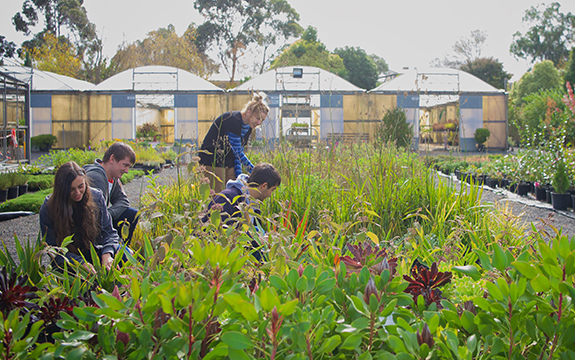Urban farming future’s so bright, our produce is wearing shades

In Summary
- Researchers are developing an energy-saving glass that is like sunglasses for plants
- Collaborative project involving Swinburne Research and PAVE
- Funded by Horticulture Innovation Australia
Researchers are looking to develop an energy-saving glass that is akin to sunglasses for plants.
Being investigated by Swinburne University of Technology with funding from Horticulture Innovation Australia (Hort Innovation), the glass will adjust in colour during different times of the day to create the optimal climate for plants. It also aims to improve energy use in greenhouses through the use of semi-transparent solar-glass, translating into potential long-term cost savings for Australian growers.
A team of leading researchers from Swinburne will undertake the project including glass and photovoltaic scientists from the Centre for Micro-photonics, horticulture experts from the Department of Trades and Engineering Technology and economists from the Centre for Transformative Innovation.
Hort Innovation Chief Executive John Lloyd says the technology, which is being investigated using vegetable levies and matched funds from the Australian Government, could present a game changer for industry.
“Industry tells us that it is finding glass-based protected cropping an attractive option as it allows the grower greater control over an environment within an enclosed area,” he says.
“However, what has been prohibitive to many growers are the energy costs. What this project aims to do is find a solution to some of those issues by looking into the development of a product which has the potential to bring cost savings and ultimately increase the viability of protected cropping.”
Lead researcher of the Swinburne team, Associate Professor Baohua Jia from Swinburne’s Centre for Micro-photonics says the project will focus specifically on solar glass (SG) and semi-transparent photovoltaic glass (STPVG).
"We'll look at frontier technologies that have the power to change the transmittance and/or select the different colors of light transmitting through glass that promote energy to enhance crop productivity,” Associate Professor Jia says.
If the glass is deemed viable for industry use, the second phase of the project will involve trialling the most cost-effective group of solutions, with the potential to trial the technology on-farm at various commercial sites in Victoria.
“If successful, the research will also have a huge impact on glass industries and greenhouse facility manufacturers all over Australia, and the world," Associate Professor Jia says.

